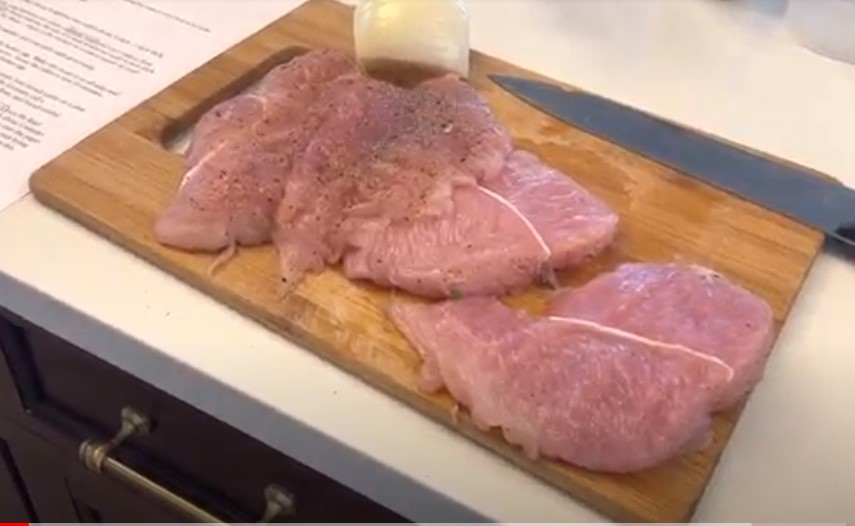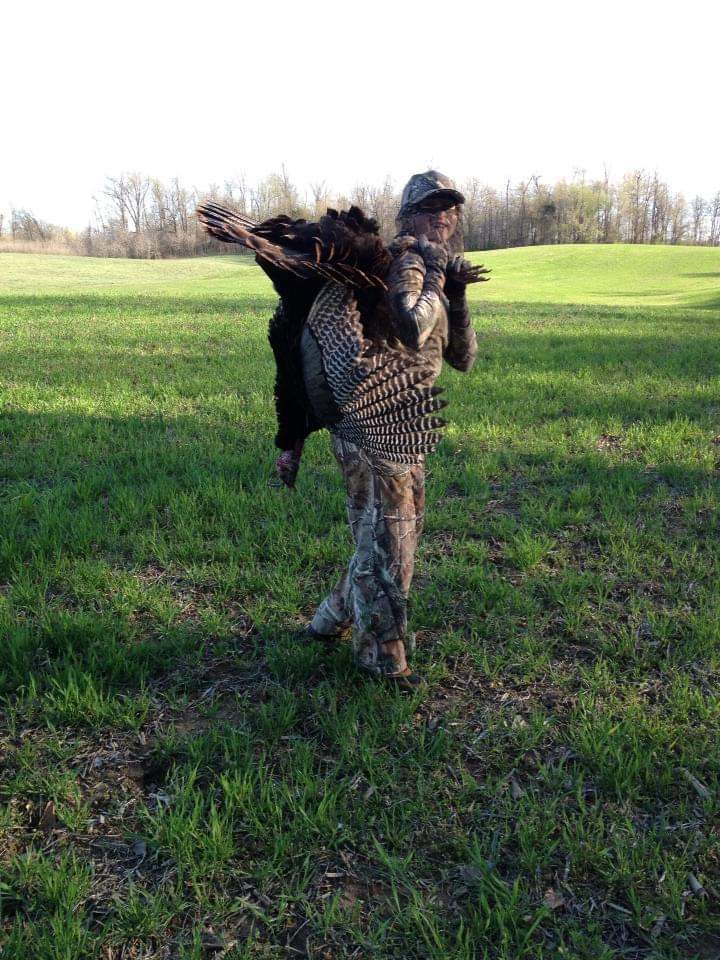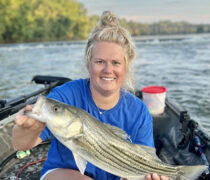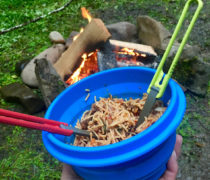Wild Turkey Schnitzel

This recipe utilizes wild turkey breasts
By: Olivia Menard
Schnitzel is basically a thin cutlet of meat, pounded thinner, breaded, and then fried. Crispy on the outside. Moist and tender on the inside.
Kaiser Basileios I of the 7th century Byzantine Empire was said to prefer his meat covered in sheets of gold. Breading was a more widely available “yellow gold” alternative. In the 1800s an Austrian general ate veal cutlets coated in bread crumbs during a tour of Milan. On returning to the Austrian Kaiser, the general spoke of the delicious veal cutlets coated in bread crumbs. Today, the WienerSchnitzel label is protected and can only be used to describe a breadcrumb coted schnitzel made with veal. Any other schnitzel made using the Viennese style breadcrumb coat is described as “Schnitzel Wiener Art” (Schnitzel Viennese Style).
The two most popular schnitzels in Germany are SchweineSchnitzel (pork schnitzel) or WienerSchnitzel (veal schnitzel coated in breadcrumbs). Both are most often served plain or with just a lemon wedge. “Wiener” means Viennese, as in, from Vienna. Remember that Austrian Kaiser and the protected label?
Next in popularity is the JägerSchnitzel (Hunter Schnitzel) served with brown mushroom gravy. Some regions skip the breading, preferring to pound their chops thin, sprinkle with salt and pepper, fry, then serve with mushroom gravy.
Less popular schnitzels that you may find in various small towns around Germany include RahmSchnitzel (schnitzel with cream sauce), ZigeunerShnitzel (Gypsy schnitzel with a sauce of tomatoes, onions, and peppers), KäseSchnitzel (Cheese schnitzel covered with, oh yes, melted cheese), PutenSchnitzel (Turkey schnitzel), HänchenSchnitzel (chicken schnitzel).
Serve with a starchy or acidic side to dampen or cut through the fat in this dish, respectively. German potato salad, French fries, sauerkraut, spätzle, mashed potatoes, or egg noodles do the job just fine. Something green on the side never hurts.
Serves 4 Prep time 20 min Cook time 25 min Total time 45 min
Ingredients:
1 Pound turkey breasts
½ cup all purpose flour
1 tsp Salt
2 large eggs, lightly beaten
¾ cup plain breadcrumbs
Peanut oil, enough to fill your frying pan allowing the cutlet to just float as it cooks
Additional salt and pepper, to your taste
1 lemon, thinly sliced
A handful of chopped fresh parsley
Steps:
- Slice each turkey breast lengthwise into cutlets about ½ inch – 1 inch thick.
- Place each cutlet between two sheets of plastic wrap and cover with a clean kitchen towel. Pound with the flat side of a meat tenderizer until ¼ inch thick. Have fun with the shape – where is the mystery in a typical square or oval?
- Mix the flour and salt together and coat each cutlet generously.
- Dip each cutlet into the lightly beaten egg. Make sure to get it on all sides and not brush off the flour in the process. Leave the cutlets to rest 10 minutes, covered completely with the lightly beaten egg.
- While the cutlets are resting in the egg, prepare your breadcrumbs on a plate or in a shallow bowl. This finishes out what the Germans call a Schnitzelstrasse (the consecutive stations of egg, flour, and breadcrumbs).
- Line a baking sheet with paper towels. Set a cooling rack over the lined baking sheet. The schnitzel will need to air dry on the rack about 5 minutes to cool and crisp after frying. Hot oil will drip from the pieces onto the paper towels on the baking sheet below. Have this all ready before you start frying or there will be more of an oily mess later. Don’t ask me how I know this. Just. Trust. Me.
- To a Dutch oven or deep pan, that is wide enough to hold one flat schnitzel with extra space to work around it, add enough oil to allow the schnitzel to just float. Heat oil to 360° F. A good thermometer that hangs on the side of your frying pan is invaluable here.
- Pickup one cutlet from the egg bath. Touch all sides gently to the breadcrumbs to bring some along for the ride. Be careful to not brush off the egg or flour in the process. This is a fine balance managed best by working slowly and intentionally.
- Using long tongs and an oven mitt to protect you from the hot oil, slowly lower the schnitzel coated with breadcrumbs into the oil. Move too fast here and your oil may splatter. Allow the schnitzel to fry for 2 to 3 minutes until each side reaches a rich golden brown and the internal temperature comes just to 165° F.
- Use those long tongs and your protective gear to retrieve the fried schnitzel from the hot oil and transfer the schnitzel to the rack set over the paper towel lined baking sheet. Allow the oil to return to 360° F before frying the next cutlet. Repeat the process until all of the schnitzels are fried and dried.
- Serve the schnitzel with a single thin lemon slice and a few pieces of roughly chopped parsley.


Olivia can be found on Facebook @ Olivia M Menard and on Instagram at @oliviammenard









